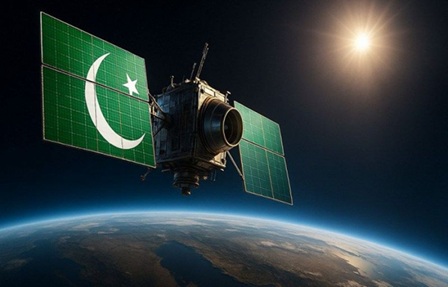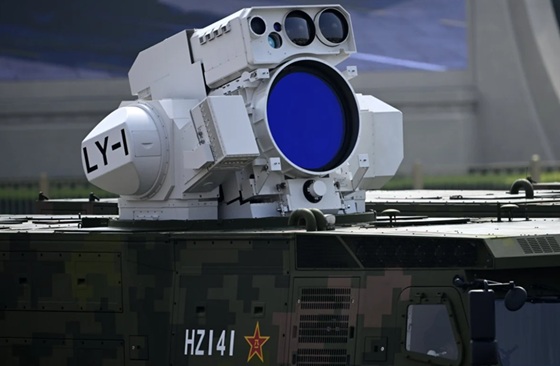In October 2025, Pakistan will mark a historic milestone in its space journey with the launch of its first hyperspectral satellite, a cutting-edge addition to its growing space capabilities. Spearheaded by the Space and Upper Atmosphere Research Commission (SUPARCO), this satellite, set to be launched from a Chinese facility, represents a pivotal step under Pakistan’s ambitious “Space Vision 2040” initiative. Unlike traditional multispectral satellites, this hyperspectral system will capture data across hundreds of narrow spectral bands (approximately 400-2500 nm), providing unprecedented detail for applications ranging from resource exploration to environmental monitoring and national security. As Pakistan joins a select group of nations with hyperspectral capabilities, this launch not only bolsters its technological prowess but also positions it as a leader in the Organisation of Islamic Cooperation (OIC) space community.
Technical Details of the Hyperspectral Satellite
The hyperspectral satellite, developed in collaboration with the China Aerospace Science Technology Corporation (CASC) and China Great Wall Industry Corporation (CGWIC), will operate in Low Earth Orbit (LEO) at an altitude of approximately 500-600 km. Unlike Pakistan’s earlier remote sensing satellites, such as the Pakistan Remote Sensing Satellite-1 (PRSS-1, launched 2018) with its multispectral and panchromatic imaging, this new satellite employs hyperspectral sensors capable of capturing data across a continuous spectrum of wavelengths. Each pixel in the imagery will carry a unique spectral signature, enabling precise identification of materials, vegetation, and environmental conditions.
Key technical features include:
– Spectral Range: Visible to shortwave infrared (400-2500 nm), covering hundreds of bands for detailed analysis.
– Spatial Resolution: Likely comparable to or better than PRSS-1’s 2.5-meter panchromatic resolution, optimized for both broad and granular imaging.
– Data Collection: High temporal resolution for frequent revisits, critical for real-time monitoring.
– Onboard Processing: Advanced algorithms to manage large datasets, reducing ground station workload.
The launch follows Pakistan’s recent successes with the PRSC-EO1 (January 2025) and PRSC-S1 (July 2025) satellites, both launched via Chinese Long March rockets. SUPARCO Chairman Muhammad Yousaf Khan announced the project during a training workshop in Lahore on September 22, 2025, highlighting its role in achieving self-reliance in space-based imaging. The satellite’s development also includes contributions from Pakistani engineers trained in hyperspectral technology, marking a step toward indigenous expertise.
Importance of the Hyperspectral Satellite
The hyperspectral satellite is a game-changer for Pakistan, a nation grappling with economic constraints, climate vulnerabilities, and strategic challenges. Its ability to provide detailed spectral data unlocks applications that were previously costly or inaccessible. The importance of this mission spans multiple domains:
1. Resource Exploration and Management:
– Hyperspectral imaging can detect minerals like copper, gold, and lithium by identifying their spectral signatures, critical for Pakistan’s untapped reserves in regions like Balochistan and Khyber Pakhtunkhwa.
– Traditional geological surveys, which cost millions and take years, can now be completed in days, reducing exploration costs by up to 90%.
– It supports water resource mapping, vital for a country facing water scarcity affecting 80% of its population.
2. Environmental and Climate Monitoring:
– Pakistan, ranked among the top 10 nations most vulnerable to climate change, will benefit from precise monitoring of glacier melt (e.g., in the Karakoram Range), flood risks, and glacial lake outburst flood (GLOF) events.
– The satellite can track air pollution, smog (a major issue in Lahore and Karachi), and greenhouse gas emissions like methane, aiding compliance with global climate goals.
– Coastal ecosystem monitoring, including mangrove health in Sindh, will support biodiversity preservation.
3. Agriculture and Food Security:
– With agriculture contributing 24% to Pakistan’s GDP and employing over 40% of its workforce, the satellite’s ability to assess crop health, soil moisture, and pest infestations will optimize yields.
– Precision farming enabled by hyperspectral data can increase agricultural productivity by 10-15%, reducing reliance on food imports.
– It will map deforestation and land degradation, supporting sustainable land use policies.
4. Disaster Management and Urban Planning:
– Real-time data will enhance early warning systems for floods, earthquakes, and landslides, critical for a nation where natural disasters affect millions annually.
– Urban expansion in megacities like Karachi (population 16 million) and Lahore can be monitored to improve infrastructure planning and reduce disaster vulnerabilities.
5. Global Standing and Collaboration:
– As the first OIC nation to deploy a hyperspectral satellite, Pakistan strengthens its position as a regional space leader.
– Collaboration with China, a global leader in hyperspectral technology, ensures access to expertise and infrastructure, paving the way for future joint missions, including astronaut training planned for 2026.
Military Applications
Beyond civilian applications, the hyperspectral satellite will significantly enhance Pakistan’s defense and national security capabilities. Its advanced imaging capabilities offer strategic advantages in a geopolitically sensitive region:
1. Border Surveillance and Threat Detection:
– Hyperspectral sensors can identify camouflaged military assets, such as vehicles or bunkers, by detecting material compositions (e.g., metals, paints) that traditional imaging might miss.
– Enhanced monitoring of Pakistan’s borders with India, Afghanistan, and Iran will improve situational awareness, particularly in contested areas like the Line of Control (LoC) in Kashmir.
– The satellite can detect chemical signatures associated with explosives or hazardous materials, aiding counter-terrorism efforts.
2. Maritime Security:
– In the Arabian Sea, the satellite can monitor naval activities, including foreign vessels near Pakistan’s Exclusive Economic Zone (EEZ) and the strategic Gwadar Port, a key node in the China-Pakistan Economic Corridor (CPEC).
– It can detect oil spills or chemical leaks, ensuring maritime environmental security and protecting naval operations.
3. Strategic Infrastructure Monitoring:
– Hyperspectral data can assess the integrity of critical infrastructure, such as military bases, dams, and nuclear facilities, by detecting structural weaknesses or material degradation.
– It supports reconnaissance for defense planning, offering high-resolution insights into terrain and resource availability in remote areas.
4. Intelligence and Counterintelligence:
– The satellite’s ability to differentiate between natural and artificial materials can uncover hidden installations or activities, such as underground bunkers or illicit mining operations.
– Real-time data sharing with Pakistan’s armed forces will enhance rapid response capabilities, crucial in a region prone to cross-border tensions.
The military applications align with Pakistan’s broader defense strategy, which emphasizes technological self-reliance and regional deterrence. By integrating hyperspectral data into its intelligence, surveillance, and reconnaissance (ISR) framework, Pakistan can reduce dependence on foreign satellite imagery, a critical factor given past restrictions on commercial data during regional conflicts.
Broader Impacts
The launch of the hyperspectral satellite will have far-reaching impacts across economic, environmental, social, and strategic domains, positioning Pakistan as a forward-thinking player in the global space race.
Sector | Key Impacts |
|---|---|
Economic | – Unlocks billions in mineral wealth, potentially boosting GDP by 1-2% through resource exports. – Enhances agricultural efficiency, reducing import costs (e.g., wheat imports cost $1 billion annually). – Creates commercial opportunities by licensing hyperspectral data to global markets, following the model of companies like Planet Labs. |
Environmental | – Provides data for climate adaptation, reducing economic losses from floods (e.g., 2022 floods caused $30 billion in damages). – Supports global sustainability goals by monitoring deforestation and emissions. – Preserves biodiversity in ecologically sensitive areas like the Himalayas and Indus Delta. |
Social | – Improves disaster preparedness, potentially saving thousands of lives annually. – Enhances urban planning, reducing strain on overpopulated cities. – Supports education and research by providing data to universities and institutions. |
Strategic | – Strengthens national security through independent ISR capabilities. – Reduces reliance on foreign satellite providers, enhancing strategic autonomy. – Positions Pakistan as a regional space hub, attracting investment and talent. |
Technological | – Builds SUPARCO’s expertise, supporting future missions like lunar exploration or satellite constellations. – Fosters a skilled workforce through training programs, with 100+ engineers already trained in hyperspectral technology. – Drives innovation in data analytics and AI to process hyperspectral datasets. |
Challenges and Future Prospects
While the satellite promises transformative benefits, challenges remain. Processing hyperspectral data requires significant computational infrastructure, and Pakistan must invest in ground stations and AI-driven analytics to maximize utility. Cybersecurity is another concern, as satellite data could be targeted by adversaries. Additionally, ensuring equitable access to data for civilian sectors will be critical to avoid over-prioritization of military applications.
Looking ahead, the satellite sets the stage for Pakistan’s long-term space ambitions. SUPARCO’s roadmap includes a lunar mission by 2030 and potential manned spaceflight with Chinese support. The hyperspectral satellite’s success could attract international partners, including Middle Eastern nations, to co-fund future projects. Commercially, Pakistan could emulate India’s ISRO by offering low-cost satellite data services, generating revenue to fuel further innovation.
Conclusion
Pakistan’s first hyperspectral satellite, launching in October 2025, is more than a technological achievement—it is a strategic leap toward self-reliance, resilience, and global relevance. By harnessing the power of hyperspectral imaging, Pakistan can unlock its natural resources, combat climate challenges, enhance food security, and bolster national defense. The satellite’s military applications, from border surveillance to maritime security, will strengthen Pakistan’s strategic posture in a volatile region. As SUPARCO builds on this milestone, the nation is poised to redefine its role in the global space community, proving that even resource-constrained countries can reach for the stars. With the world watching, Pakistan’s hyperspectral satellite is set to illuminate a brighter, more secure future.
Discover more from Defence Talks | Defense News Hub, Military Updates, Security Insights
Subscribe to get the latest posts sent to your email.





